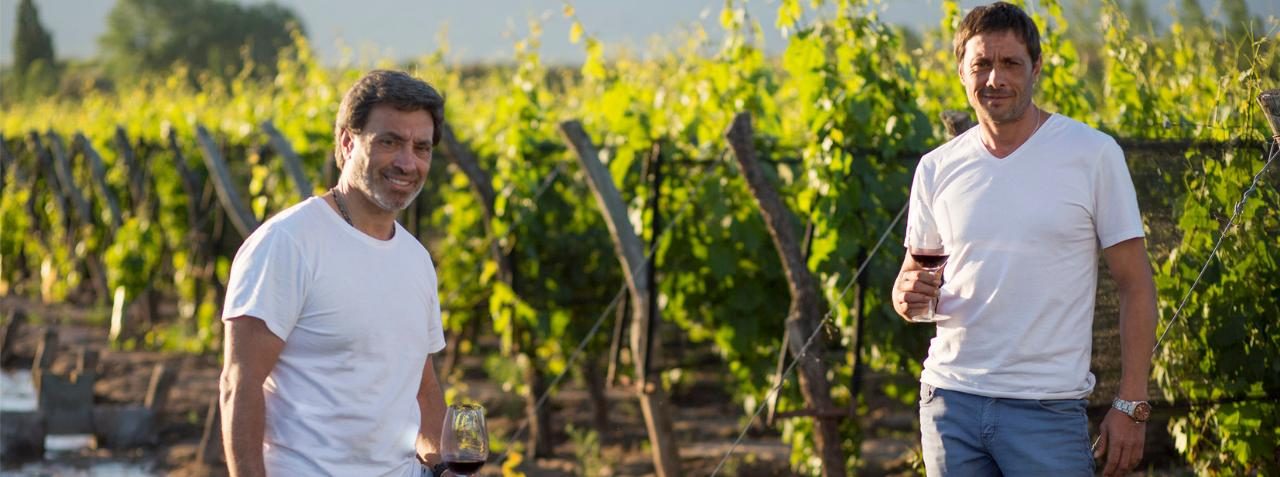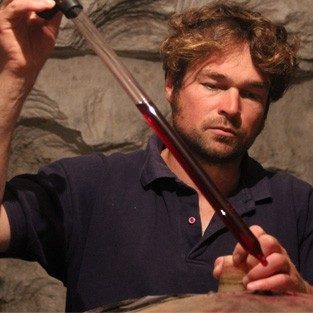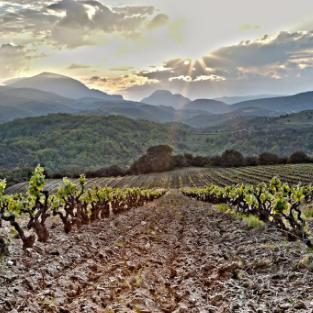DURIGUTTI FAMILY WINEMAKERS
ARGENTINA
Some years ago, we began to research young, upcoming vignerons in Malbec’s heartland, Argentina. This was not only a relatively new country for Thorman Hunt but also a new continent and our focus was to unearth individual wines which would complement our existing portfolio of producers. Here we sought growers that express their terroir, using indigenous yeasts and a lower intervention style of winemaking. Hector and Pablo Durigutti are amongst an exciting, new generation of winemakers, leading an evolutionary change in Argentina’s viticulture and winemaking philosophy today. We are proud to list their exceptional expressions of “Proyecto Las Compuertas” as well as their Aguijón de Abeja Bonarda and Malbec. Las Compuertas is a westerly region of Luján de Cuyo in Mendoza, offering the coolest climate and a wide diversity of soils. The wines are fresh, vibrant styles with an impressive sense of place.
Aguijón de Abeja, Durigutti
The brothers are proud to explore and champion terroirs beyond Mendoza under their Aguijón de Abeja range, ‘bee sting’, referencing the laborious work of the bee. They look for distinct viticultural regions in Argentina and find the variety that best represents each province. They produce a Malbec from Neuquén province in Patagonia and Bonarda from the Catamarca
province. The Malbec vines were planted back in 1930 and Bonarda in 1938. Both are aged in French oak, the former for seven months and the latter for six months.
Proyecto Las Compuertas, Durigutti – ORGANIC
“Proyecto Las Compuertas is not just a project but a symbol of deep identity, from some of the oldest and most unique vineyards in Mendoza, each parcel tells its own story. The philosophy of PLC is to have wines that authentically express their origin with preservation of historic vineyards and a winemaking approach that highlights the value of terroir.”
The vines of Proyecto Las Compuertas are planted at 1,050m above sea level and the wines are now certified organic. Their Criolla vines were planted in 1943 on stony free soil; the Charbono in 2016 and the Cabernet Franc in 2015, both on stony loam soil. The vines for the Malbec Cinco Suelos were planted in 1914 and the name highlights the five different soil profiles they are planted on: clay, limestone, stony soil, sand, and riverbed stones. These single varietals are fermented with indigenous yeasts in concrete eggs. For the Criolla, the grape skins are removed halfway through the fermentation process, resulting in a refreshing, light style of red.
 Sparkling Sparkling |  White White |  Rosé Rosé |  Red Red |  Orange Orange |
 Sweet Sparkling Sweet Sparkling |  Sweet Sweet |  Fortified Fortified |  Spirits Spirits |  Beer Beer |










